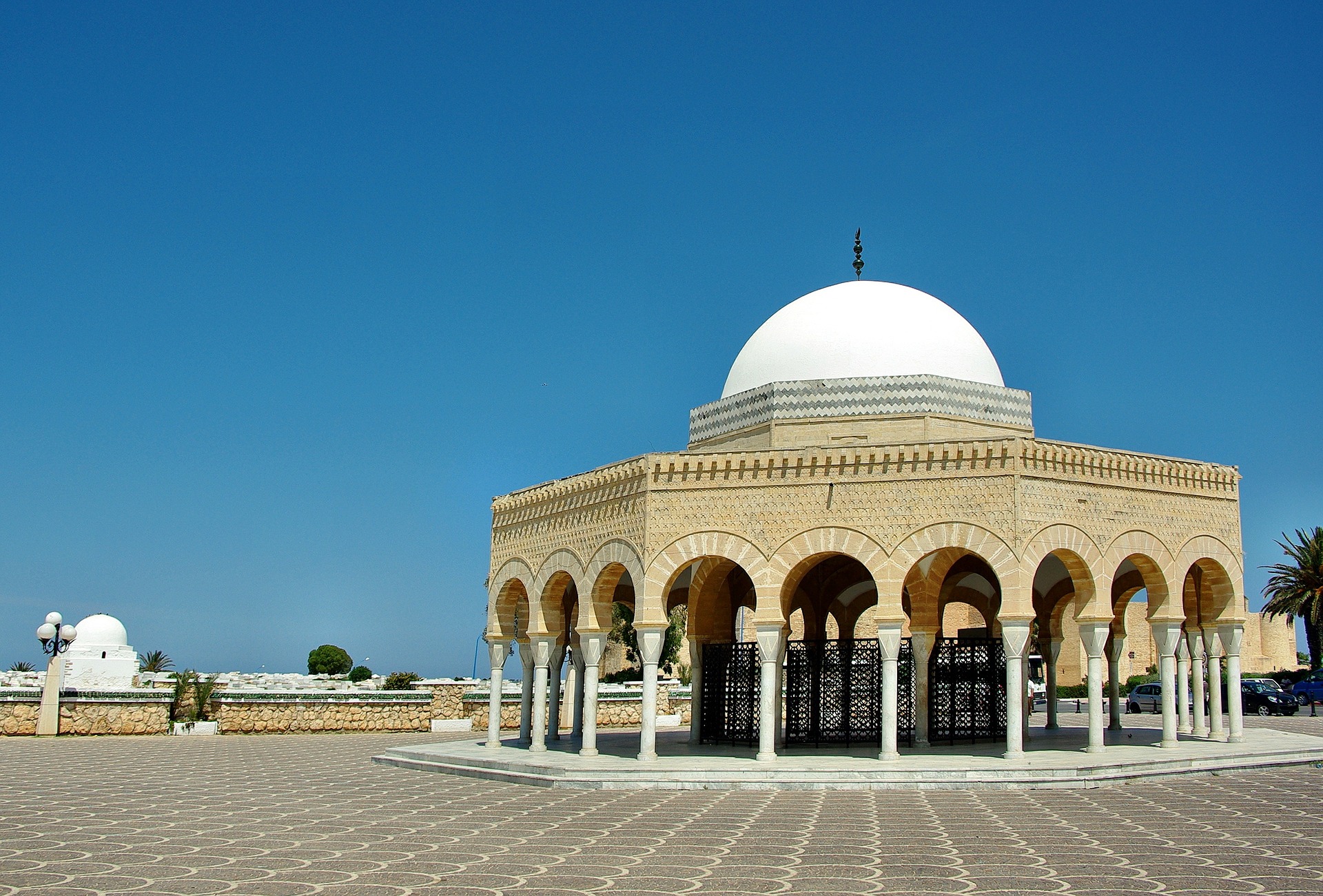Lunar crescent visibility of Dhu al-Hijjah 1441 Hijri
The conjunction:
The geocentric conjunction between the Moon and the Sun will be at the end of the lunar month on Monday July 20, 2020 at 18:33local time.
Moon’s position after sunset on Monday July 20, 2020
.
In Tunisia: After sunset, the moon will remain above the horizon from 5 to 7 minutes, All over the Tunisian territory. The geocentric elongation (ARCL) between the moon and the sun will be around 0.5° and the Moon’s elevation (HL) will be around 2.5°, after sunset. The highest values will be recorded in Tabarka with HL= 0.63 ° and ARCL = 2.69 °.
In Islamic cities: In The most Islamic cities The moon sets before sunset , and the highest values of elongation and moon’s elevation, will be recorded in the western countries of the Islamic world. In Casablanca, the Moon will remain above the horizon the maximum duration (around 8 minutes), after sunset, with HL= 0.92° and ARCL= 2.88° at sunset.
Possibility of Moon crescent visibility:
The visibility of the Jumada al-awwal crescent will be possible after sunset on Tuesday July 21, 2020, in the world, from 08:20 local time. The crescent will be visible for the first time, from West Pacific, then successively to the West, as shown on the map below (Fig. 2).
Table 1: Astronomical data relating to the observation of the lunar crescent of Dhu al-Hijjah 1441 Hijri, after sunset on Monday July 20, 2020 – (29 Dhu al-Qidah 1441 Hijri):
|
City |
Time Zones |
Sunset |
Lag |
Moon position at. Sunset |
|||||||
|---|---|---|---|---|---|---|---|---|---|---|---|
|
Moon Age |
HL |
DAZ |
ARCL |
W |
|||||||
|
HH |
HH |
Mn |
HH |
Mn |
HH |
Mn |
deg° |
deg° |
deg° |
% |
|
|
Tunis |
1.0 |
19 |
36 |
0 |
7 |
1 |
3 |
0.59 |
1.19 |
2.67 |
0.05 |
|
Dakar |
0. |
19 |
42 |
0 |
4 |
2 |
9 |
0.44 |
1.84 |
2.90 |
0.06 |
|
Nouakchott |
0. |
19 |
42 |
0 |
5 |
2 |
9 |
0.56 |
1.68 |
2.89 |
0.06 |
|
Casablanca |
0. |
19 |
39 |
0 |
8 |
2 |
6 |
0.92 |
0.96 |
2.88 |
0.06 |
|
Alger |
1. |
20 |
3 |
0 |
8 |
1 |
31 |
0.77 |
1.00 |
2.75 |
0.06 |
|
Tripoli |
1. |
19 |
13 |
0 |
5 |
0 |
41 |
0.36 |
1.50 |
2.62 |
0.05 |
|
Caire |
2. |
18 |
56 |
0 |
1 |
*** |
*** |
0.26 |
2.05 |
2.56 |
0.05 |
|
Beyrouth |
2. |
18 |
47 |
0 |
2 |
*** |
*** |
0.17 |
1.99 |
2.57 |
0.05 |
|
Khartoum |
2. |
18 |
25 |
0 |
-2 |
*** |
*** |
****** |
2.50 |
2.59 |
0.05 |
|
La Mecque |
3. |
19 |
4 |
0 |
-1 |
*** |
*** |
****** |
2.50 |
2.62 |
0.05 |
|
La Medina |
3. |
19 |
10 |
0 |
-1 |
*** |
*** |
****** |
2.42 |
2.61 |
0.05 |
|
Sanaa |
3. |
18 |
37 |
0 |
-4 |
*** |
*** |
****** |
2.68 |
2.69 |
0.06 |
|
Oman |
2. |
18 |
42 |
0 |
1 |
*** |
*** |
0.28 |
2.08 |
2.57 |
0.05 |
|
Bagdad |
3. |
19 |
9 |
0 |
1 |
*** |
*** |
0.43 |
2.23 |
2.61 |
0.05 |
|
Koweït |
3. |
18 |
48 |
0 |
0 |
*** |
*** |
****** |
2.45 |
2.66 |
0.05 |
|
Teheran |
3.5 |
19 |
17 |
0 |
0 |
*** |
*** |
0.47 |
2.31 |
2.66 |
0.05 |
|
Istanbul |
3. |
20 |
32 |
0 |
6 |
*** |
*** |
0.33 |
1.43 |
2.57 |
0.05 |
|
Jakarta |
8. |
18 |
53 |
0 |
-20 |
*** |
*** |
****** |
2.60 |
4.20 |
0.13 |
|
Mexico |
-7.0 |
19 |
36 |
0 |
21 |
7 |
3 |
2.51 |
-1.94 |
4.72 |
0.17 |
|
Washington |
-5.0 |
17 |
56 |
0 |
0 |
4 |
23 |
****** |
3.47 |
3.61 |
0.10 |
|
Montreal |
-5.0 |
17 |
26 |
0 |
-1 |
2 |
54 |
****** |
2.97 |
3.10 |
0.07 |
Figure 1: Moon’s position in Tunis, at sunset on Monday July 20, 2020–(29 Dhu al-Qidah 1441 Hijri).
Figure 2: Lunar crescent visibility areas of Dhu al-Hijjah 1441 Hijri (according to Istanbul criteria) after sunset on Tuesday July 21, 2020
Abbreviation:
lag: The period between sunset and moonset. (If the value is negative, in this case the moon sets before the sun).
Age Lune: The period between the conjunction and the sunset.
HL: Moon topocentric elevation (if the moon sets before the sun, the value will compensated by the symbol "*** ***").
DAZ: The difference between the sun’s azimuth and the moon’s azimuth, at sunset.
ARCL: Geocentric elongation between the sun and the moon.
W: The illuminated percentage of the moon's surface.
Indication : The criteria used to predict the visibility of the lunar crescent, are the Istanbul criteria (1978-2016).
The crescent Moon is visible after sunset, if the following conditions (criteria) are true.
- The geocentric conjunction occurs before sunset.
- HL> 5 ° at sunset.
- ARCL> 8 °, at sunset.









